Filter by

Enhancing Synergies in a Collaborative Environment
This volume contains a selection of the best papers presented at the 8th International Conference on Industrial Engineering and Industrial Management, XX International Conference on Industrial Engineering and Operations Management, and International IIE Conference 2014, hosted by ADINGOR, ABEPRO and the IIE, whose mission is to promote links between researchers and practitioners from different…
- Edition
- -
- ISBN/ISSN
- 978-3-319-14078-0
- Collation
- 71 b/w illustrations
- Series Title
- -
- Call Number
- -
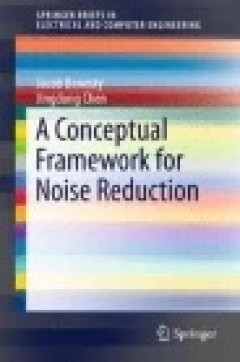
A Conceptual Framework for Noise Reduction
Though noise reduction and speech enhancement problems have been studied for at least five decades, advances in our understanding and the development of reliable algorithms are more important than ever, as they support the design of tailored solutions for clearly defined applications. In this work, the authors propose a conceptual framework that can be applied to the many different aspects of n…
- Edition
- Ed. 1
- ISBN/ISSN
- 978-3-319-12955-6
- Collation
- -
- Series Title
- SpringerBriefs in Electrical and Computer Engineering
- Call Number
- 621.3822 BEN c
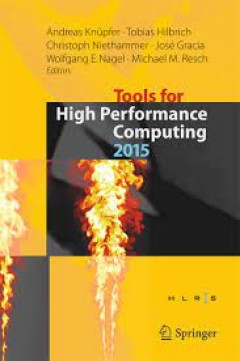
Tools for High Performance Computing 2015
High Performance Computing (HPC) remains a driver that offers huge potentials and benefits for science and society. However, a profound understanding of the computational matters and specialized software is needed to arrive at effective and efficient simulations. Dedicated software tools are important parts of the HPC software landscape, and support application developers. Even though a tool is…
- Edition
- -
- ISBN/ISSN
- 978-3-319-39589-0
- Collation
- 23 b/w illustrations, 41 illustrations in colour
- Series Title
- -
- Call Number
- -
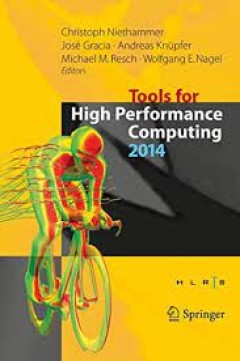
Tools for High Performance Computing 2014
Numerical simulation and modelling using High Performance Computing has evolved into an established technique in academic and industrial research. At the same time, the High Performance Computing infrastructure is becoming ever more complex. For instance, most of the current top systems around the world use thousands of nodes in which classical CPUs are combined with accelerator cards in order …
- Edition
- -
- ISBN/ISSN
- 978-3-319-16012-2
- Collation
- 18 b/w illustrations, 109 illustrations in colour
- Series Title
- -
- Call Number
- -

Tissue-Specific Stem Cell Niche
This timely volume explores tissue-derived stem cells, summarizing and evaluating the current body of knowledge. Sixteen chapters cover hematopoietic, osteoblast, skeletal, cardiac, pancreatic, epithelial, corneal, hepatic, renal, testicular, ovarian, fingernail, hair follicle and other stem cells- discussing their individual development, functions and pathologies, as well as the commonalities …
- Edition
- -
- ISBN/ISSN
- 978-3-319-21705-5
- Collation
- 4 b/w illustrations, 44 illustrations in colour
- Series Title
- -
- Call Number
- -

Tissue and Organ Regeneration in Adults
This textbook describes the basic principles of induced organ regeneration in skin and peripheral nerves and extends the original successful paradigm to other organs. A set of trans-organ rules is established and its use in regeneration of several organs is illustrated from the works of several independent investigators who worked with a variety of organs, such as the lung, the bladder, and the…
- Edition
- -
- ISBN/ISSN
- 978-1-4939-1865-2
- Collation
- 40 b/w illustrations, 21 illustrations in colour
- Series Title
- -
- Call Number
- -

Tissue Engineering for the Heart
This book covers the fundamentals of tissue engineering for the heart, starting with the basics of organ generation, sensors in tissue and organ fabrication, and the current state-of-the-art in stem cell engineering for the heart. With this foundation in place, the remaining chapters focus on specific aspects of the cardiovascular system, starting with heart muscle, then biological pumps, follo…
- Edition
- -
- ISBN/ISSN
- 978-3-319-41504-8
- Collation
- 97 illustrations in colour
- Series Title
- -
- Call Number
- -
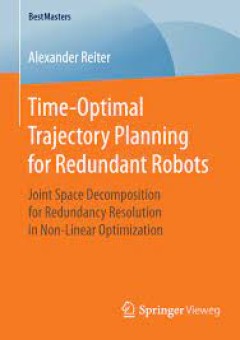
Time-Optimal Trajectory Planning for Redundant Robots
This master’s thesis presents a novel approach to finding trajectories with minimal end time for kinematically redundant manipulators. Emphasis is given to a general applicability of the developed method to industrial tasks such as gluing or welding. Minimum-time trajectories may yield economic advantages as a shorter trajectory duration results in a lower task cycle time. Whereas kinematical…
- Edition
- -
- ISBN/ISSN
- 978-3-658-12701-5
- Collation
- 35 b/w illustrations
- Series Title
- -
- Call Number
- -
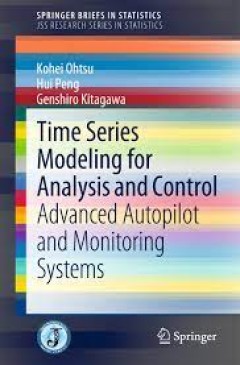
Time Series Modeling for Analysis and Control
This book presents multivariate time series methods for the analysis and optimal control of feedback systems. Although ships’ autopilot systems are considered through the entire book, the methods set forth in this book can be applied to many other complicated, large, or noisy feedback control systems for which it is difficult to derive a model of the entire system based on theory in that subj…
- Edition
- -
- ISBN/ISSN
- 978-4-431-55303-8
- Collation
- 63 b/w illustrations, 14 illustrations in colour
- Series Title
- -
- Call Number
- -

Enhanced Building Information Models Using IoT Services and Integration Patt…
This book explains how to combine and exploit sensor networks and internet-of-things (IoT) technologies and Web-service design patterns to enrich and integrate Building Information Models (BIMs). It provides approaches and software architectures for facilitating the interaction with (and between) BIMs through Web services, and for enabling and facilitating the fusion of the information residing…
- Edition
- -
- ISBN/ISSN
- 978-3-319-21825-0
- Collation
- 56 b/w illustrations
- Series Title
- -
- Call Number
- -
 Computer Science, Information & General Works
Computer Science, Information & General Works  Philosophy & Psychology
Philosophy & Psychology  Religion
Religion  Social Sciences
Social Sciences  Language
Language  Pure Science
Pure Science  Applied Sciences
Applied Sciences  Art & Recreation
Art & Recreation  Literature
Literature  History & Geography
History & Geography